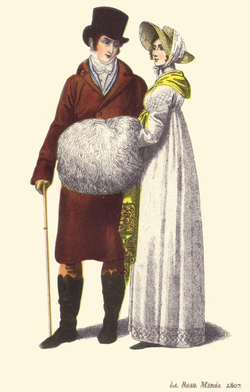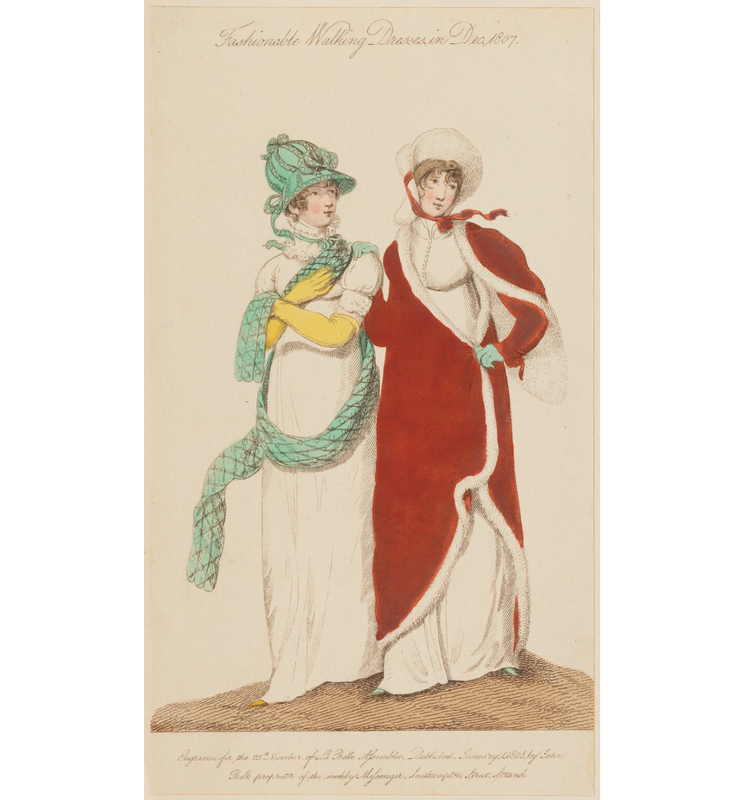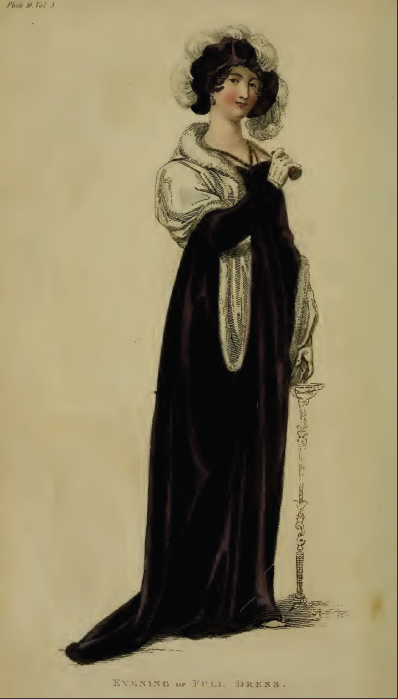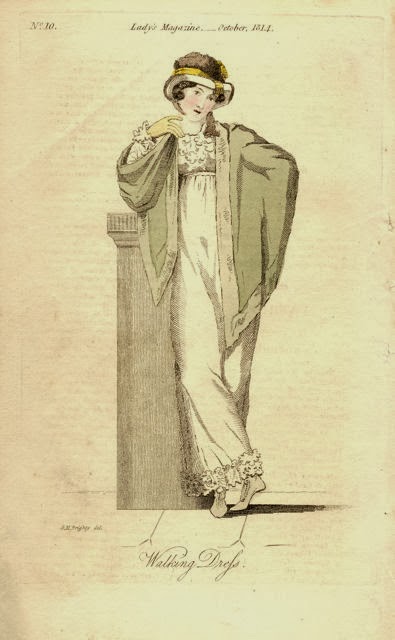
No. 1. - A Morning Dress. A round cambric gown, a walking length, with short full sleeve, and puckered cuff, buttoned or laced down the back, and made high round the neck, with a full frill of lace. A military stock, edged round the chin with the same. A figured Chinese scarf, the colour American green, twisted round the figure in the style of antique drapery. Melon bonnet the same colour, striped, and trimmed to correspond with the scarf. Hair in irregular curls on the forehead. Earrings of gold or topaz. Long York tan, or Limerick gloves, above the elbow. Slippers of yellow Morocco. This dress, divested of the bonnet, is considered genteel negligée for any period of the day.
No. 2. - A Morning Walking, or Carriage Habiliment. A simple breakfast robe of India muslin, or cambric; with plain high collar, and long sleeve. Plain chemisette front, buttoned down the bosom. A Calypso wrap of morone velvet, or kerseymere, trimmed entirely round with white ermine, or swansdown. Spanish hanging-sleeve, suspended from the back, and falling over the left shoulder, terminating in a round point below the elbow. This ornament is lined throughout with skin the same as the trimming. A mountain hat of white Imperial beaver, or fur, tied under the chin with a ribband the colour of the coat. Gloves and shoes of American green, or buff. Cropt hair, confined with a band, and curled over the left eye.
As often in the fashion plate world, the descriptions are detailed and using terms like 'morone', which drive we 21st c. readers to our glossaries. Marone means 'maroon' which was used loosely by the water-colorist who painted this plate.
A round gown has several definitions, but it generally refers to a skirt that goes fully around the waist, not split to show an undergown, as often in the early 18th and 17th centuries. A capuchin cloak indicates a hood (like the monks?). It doesn't look very warm for a February evening at the opera.
A plain high morning robe of India muslin with an ala Greque border of needlework at the feet. A French wrapping coat of gray or blossom-colored silk, trimmed entirely round with swansdown.
Hair in dishelved curls and twisted bands, Beehive hat, composed of the same material as the coat, with strings of lemon-colored ribbon, and ornamented with two curled ostrich feathers. Half-boots of buff silk, and kid gloves of a lemon color.





 RSS Feed
RSS Feed